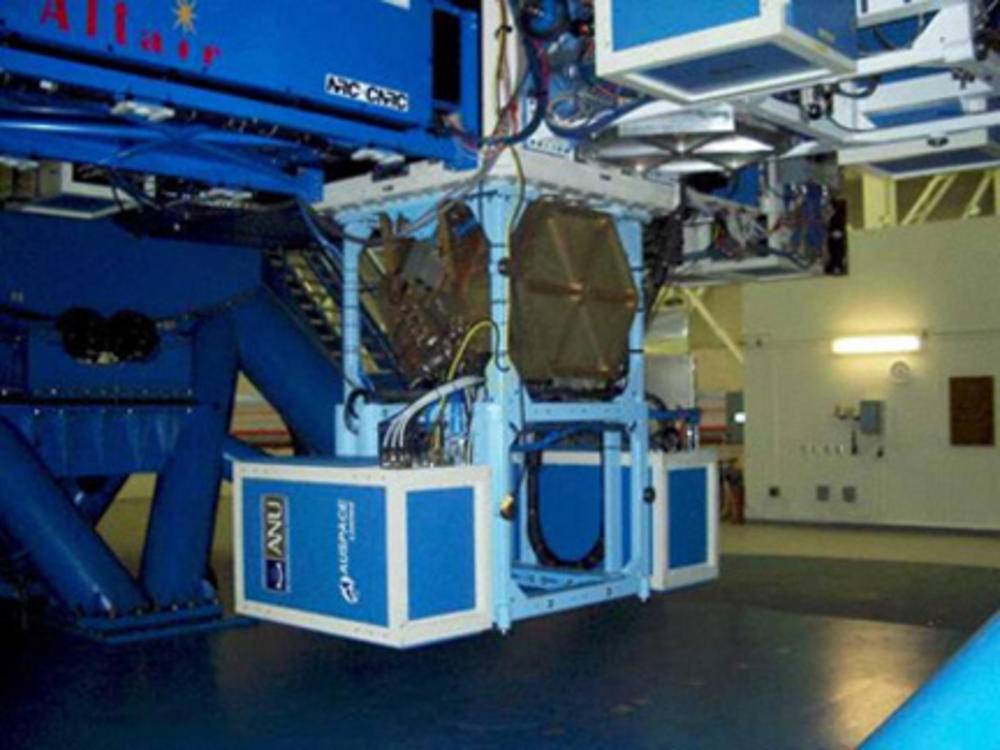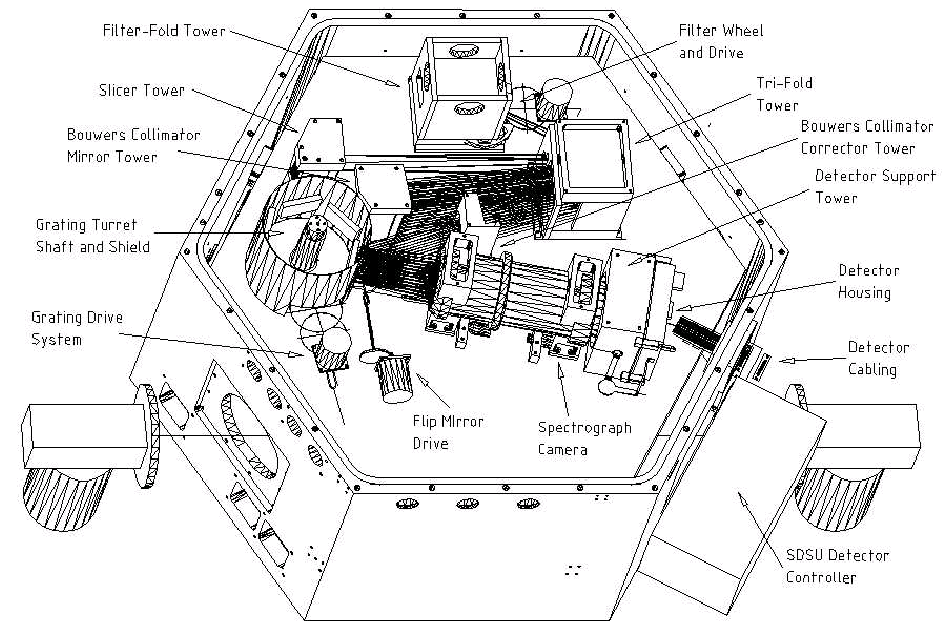
Capability Summary
- AO (NGS, LGS, Super Seeing) available with Altair (0.1" FWHM with full AO correction)
- Total wavelength range = 0.95−2.4 µm
Spectroscopy
- Resolution (See grating options)
- 5000−6000 (depending on grating)
- Modes
- IFU (Read more)
- 3" × 3" field of view
- 0.103" (across slices) and 0.04" (along slices) spatial sampling
- Simultaneous coverage = 200−400 nm (depends on the band)
- Occulting disks (0.2" and 0.5") available for coronagraphic mode
- IFU (Read more)
Guiding Options (Read more)
- PWFS
- Altair (NGS, LGS, LGS+P1)
Get the sensitivity
Get to the integration time calculator
NIFS is Gemini-North's Near-Infrared Integral Field Spectrometer built by the Australian National University's Research School of Astronomy and Astrophysics. NIFS has been available since semester 2006B for classical and queue scheduled observing at Gemini-North.

Announcements
Instrument Team
gn Instrument Scientist
gn Additional Support Staff
- Emanuele Paolo Farina
- Brian C. Lemaux
- Mark Rawlings
- Julia Scharwächter
- Tom Seccull
- Andy Stephens
Email: nifs_science@gemini.edu